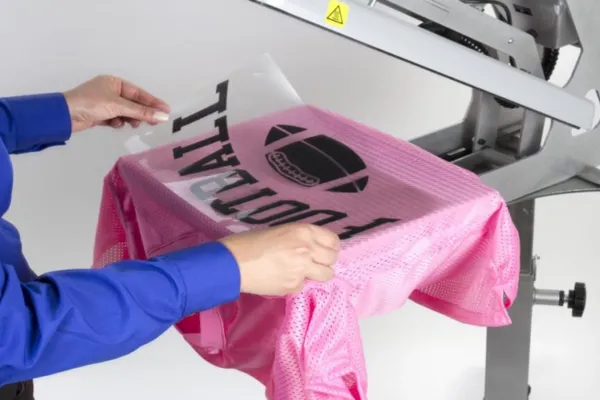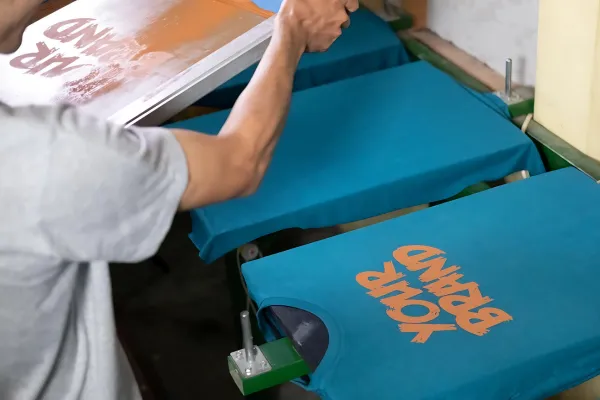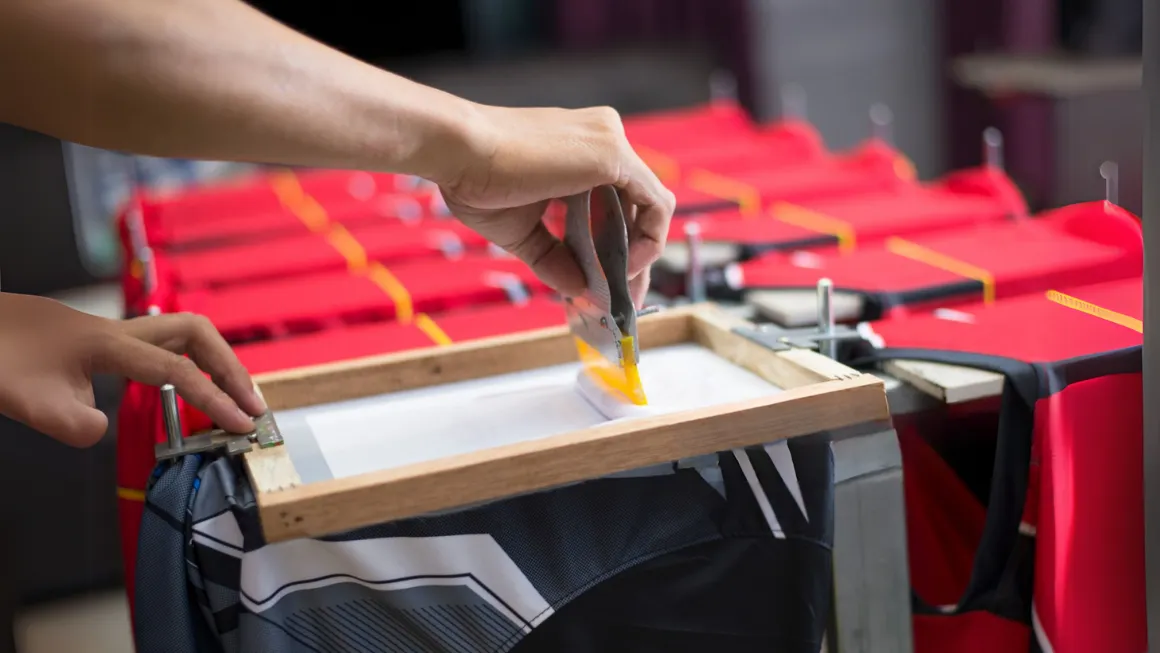Choosing the right printing method is one of the most important steps when ordering custom t-shirts or mugs, especially if you’re looking for quality, durability, and value for money. Two of the most popular techniques used today are heat transfer printing and screen printing.
While both methods have their strengths, they suit different needs depending on your design, order size, and material type. Whether you’re planning a one-off personalized gift or a bulk order for your business or event in Singapore, understanding the difference can help you make the right choice.
In this guide, we’ll break down how each method works, its pros and cons, and when to use one over the other. Let’s get started.
What is Heat Transfer Printing?

Heat transfer printing is a technique that uses heat and pressure to transfer a design from a special film or transfer paper onto fabric or other surfaces like mugs, tote bags, or cushion covers. This method typically involves digitally printing your design using a heat transfer vinyl (HTV) or inkjet printer, then using a heat press machine to apply the image to your product.
This printing process is especially popular for full-color and detailed images, including photographs and complex gradients that are difficult to achieve with other methods. Since designs are first printed digitally, there’s a high degree of flexibility and customization, even for small orders.
Pros of Heat Transfer Printing:
- Great for complex or colorful designs: Ideal for photographic or gradient-heavy images.
- Low setup cost: Perfect for small batches or one-off prints.
- Quick turnaround: Efficient for on-demand or last-minute orders.
- Versatile: Works well on t-shirts, mugs, hats, bags, and more.
Cons of Heat Transfer Printing:
- Durability: May fade or crack over time with frequent washing or heavy use.
- Less breathable: The printed area can feel slightly rubbery or heavy on fabric.
- Not ideal for bulk: Slower and costlier for large quantity orders compared to screen printing.
Heat transfer printing is often used by small businesses or individuals looking to create personalized gifts or custom merchandise in small quantities. In Singapore, it’s a popular choice for quick custom prints for corporate events, birthdays, or promotional giveaways.
Also Read: What is Silkscreen Printing
What is Screen Printing?

Screen printing, also known as silk screen printing, is a traditional printing technique that involves creating a stencil (or “screen”) and using it to apply layers of ink directly onto a surface like fabric, plastic, or ceramic. Each color in the design requires a separate screen, which is why this method is best suited for simple designs with limited colors.
This technique is widely used for printing on t-shirts, hoodies, bags, and other apparel, especially for large quantity orders. It’s known for producing vibrant, long-lasting prints that hold up well even after multiple washes.
Pros of Screen Printing:
- Excellent durability: Ink bonds well with fabric, resulting in a long-lasting print.
- Vibrant colors: Produces bold, rich colors that stand out.
- Cost-effective for bulk orders: Lower per-piece cost when printing large quantities.
- Professional finish: Smooth and high-quality output, especially for logos and bold graphics.
Cons of Screen Printing:
- Higher setup cost: Each color and design variation requires a new screen.
- Not ideal for complex designs: Difficult to reproduce gradients or photo-realistic images.
- Minimum order requirements: Often not practical for very small or single-piece orders.
- Time-consuming setup: Preparing screens and aligning them takes longer than digital methods.
Screen printing is commonly used by businesses, schools, and event organizers in Singapore who need branded apparel in large quantities. It’s ideal for promotional merchandise, uniforms, and products that require both visual appeal and long-term wearability.
Also Read: Types of Shirt Printing Methods
Key Differences: Heat Transfer vs Screen Printing
Understanding the differences between heat transfer and screen printing will help you decide which method aligns best with your goals, budget, and design needs. Below are the main comparison points explained with individual headings:
1. Design Complexity
Heat transfer printing is ideal for intricate designs, full-color artwork, and photo-realistic images. It supports gradients, fine details, and high-resolution graphics. Screen printing, however, is best suited for simpler designs with solid colors, such as logos or bold text, since each color requires a separate screen setup.
2. Order Size
For small runs, one-off pieces, or personalized gifts, heat transfer is the more practical option because it doesn’t require much setup. Screen printing, on the other hand, becomes more economical for large-volume orders due to its lower cost per piece at scale.
3. Setup Time & Cost
Heat transfer printing requires minimal setup, making it faster and more affordable for quick or small jobs. Screen printing involves a more time-consuming setup process, especially for multi-color designs, which can increase the initial cost.
4. Durability
Screen printing offers excellent durability. The ink bonds well with fabric and withstands many washes without fading. Heat transfer prints are durable too, but over time they may crack, peel, or fade—especially if not cared for properly.
5. Finish & Feel
Heat transfer designs often sit on top of the fabric and may have a slightly plastic or rubbery texture. In contrast, screen printing produces a smoother, softer finish that blends seamlessly into the fabric, offering a more professional look and feel.
6. Production Speed
If you’re working on a last-minute order or need a quick turnaround for a few items, heat transfer printing is the way to go. Screen printing takes longer to prepare, but can print a high volume of pieces more efficiently once setup is complete.
7. Material Compatibility
Heat transfer is highly versatile and can be used on a variety of surfaces, including polyester, cotton blends, mugs, tote bags, and more. Screen printing is most effective on fabric, especially cotton, and is generally not used on non-textile materials.
Also Read: Digital Printing vs Offset Printing
Which Printing Method Should You Choose?
The right printing method depends on your design, quantity, material, and budget.
Choose heat transfer printing if you need a small batch, detailed or photo-quality designs, or a quick turnaround. It’s perfect for personalized gifts like t-shirts, mugs, and tote bags—especially for short-run or last-minute orders.
Go for screen printing if you’re ordering in bulk and want long-lasting, vibrant prints. It’s ideal for simple designs like logos and text, and works best on fabric items such as uniforms and promotional apparel.
In Short:
Heat Transfer: Best for small orders, detailed designs, and multiple surfaces.
Screen Printing: Best for bulk orders, durability, and fabric-based prints.
Need help deciding? In Singapore, custom printing services like JoSa Imaging can guide you toward the right choice based on your needs.
Choose JoSa Imaging for T-Shirt and Mug Printing in Singapore
When it comes to custom printing in Singapore, JoSa Imaging is your trusted partner for high-quality t-shirt printing and mug printing services. Whether you’re ordering for a corporate event, a birthday gift, or promotional merchandise, we offer both heat transfer and screen printing options to suit your needs.
At JoSa Imaging, we combine creativity with precision to deliver vibrant, long-lasting prints—no matter the order size. From single personalized items to bulk corporate orders, our team ensures fast turnaround, professional results, and friendly service every step of the way.
Looking for guidance on which printing method is right for your project? We’re here to help you make the best choice based on your design, quantity, and budget.
Contact JoSa Imaging today to get started with your custom t-shirt or mug printing in Singapore!




